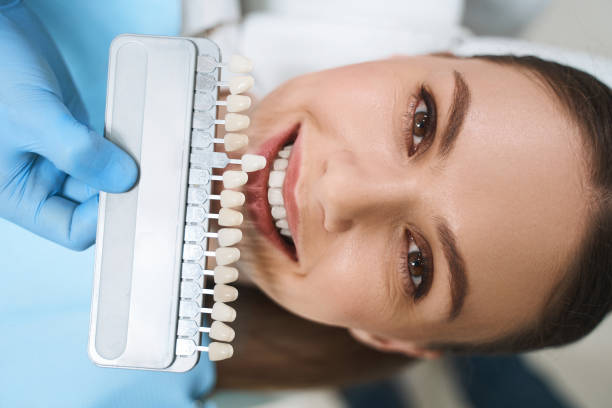Cosmetic dentistry has long been associated with enhancing appearance and boosting confidence, but recent advances are also making it more inclusive and accessible to people of all abilities. Traditionally, dental treatments could be challenging for individuals with disabilities or specific health conditions due to physical, sensory, or cognitive barriers. However, the field of cosmetic dentistry is evolving, with new techniques and options designed to ensure everyone can access and benefit from treatments that improve both functionality and aesthetics. Here’s a look at how cosmetic dentistry is breaking barriers and offering tailored solutions for individuals of all abilities.
1. Accessible Treatment Options
Cosmetic dentistry offers a wide range of treatments, from teeth whitening and veneers to dental implants and orthodontics. Thanks to advancements in technology and a greater emphasis on inclusivity, these treatments are now more accessible to people with various needs. Dentists are increasingly trained to accommodate patients with physical limitations, sensory sensitivities, or cognitive challenges. This might include adapting the treatment environment, using sensory-friendly materials, or offering specialized tools that make procedures smoother and more comfortable.
For example, patients with mobility impairments can benefit from adjustable dental chairs, wheelchair-accessible facilities, and modified treatment setups that make it easier to receive care. Some clinics also offer in-home or mobile services, allowing patients to receive dental care without needing to travel to a clinic.
2. Sedation and Comfort-Focused Techniques
Dental anxiety and fear of pain are common barriers, especially for individuals with sensory sensitivities or anxiety disorders. To address this, many cosmetic dentists, such as those at 5 Star Dental Group, now offer sedation options and comfort-focused techniques that help ease anxiety and make procedures more manageable. Options like nitrous oxide (laughing gas), oral sedation, or IV sedation allow patients to relax or even sleep through treatments, reducing stress and discomfort. These options are particularly beneficial for patients with autism, ADHD, or other conditions where staying still or dealing with sensory overload can be challenging.
Comfort-focused techniques, such as using quieter tools and incorporating calming elements like noise-cancelling headphones or weighted blankets, are also increasingly available. By creating a more sensory-friendly environment, dentists can help patients with specific sensitivities feel safe and comfortable during their visits.
3. Tailored Cosmetic Treatments for Functional Benefits
Cosmetic dentistry isn’t just about aesthetics; it can also improve oral health and function. Treatments like dental implants, crowns, and veneers can restore damaged teeth, enhance chewing ability, and improve speech. For individuals with disabilities that affect oral structure, such as cleft palate or certain genetic conditions, cosmetic procedures can have a significant functional impact. Customized treatments can address specific needs, whether it’s improving bite alignment, restoring tooth strength, or replacing missing teeth.
Orthodontic treatments, including clear aligners, are another option for patients seeking both aesthetic and functional improvements. These aligners are often a better alternative for individuals who may struggle with traditional braces, offering a more comfortable and flexible way to straighten teeth.
4. Advanced Technology for Greater Precision and Comfort
Innovative technology is also playing a key role in making cosmetic dentistry more accessible. Digital imaging, 3D scanning, and CAD/CAM (computer-aided design and manufacturing) tools allow dentists to create precise treatment plans that cater to individual needs. These tools reduce the need for invasive procedures, improve treatment accuracy, and shorten recovery times, making cosmetic dental treatments more convenient for those with disabilities or health conditions.
For instance, digital impressions can replace traditional dental molds, which may be uncomfortable or challenging for some patients to tolerate. These high-tech tools also enhance communication between the patient and dentist, allowing individuals to see a virtual representation of their future smile and fully understand the treatment process.
5. Benefits of Cosmetic Dentistry for Overall Wellbeing
Improving one’s smile has a profound impact on self-confidence, mental health, and social interactions. For individuals with disabilities, the benefits of cosmetic dentistry can extend far beyond appearance. A restored or enhanced smile can improve speech, ease eating difficulties, and contribute to better oral health, which in turn impacts overall health. Furthermore, a confident smile can positively influence social experiences, which can be especially important for individuals who may face social challenges.
By breaking down physical and psychological barriers, cosmetic dentistry is creating opportunities for people of all abilities to enjoy the benefits of a healthy, beautiful smile. The industry’s commitment to inclusivity is not only expanding access to dental care but also helping patients lead healthier, happier lives.
A Brighter, Inclusive Future in Cosmetic Dentistry
As cosmetic dentistry continues to evolve, inclusivity is becoming a central focus. Dentists are increasingly aware of the diverse needs of their patients and are working to provide flexible, comfortable, and effective solutions that cater to everyone. By adopting innovative techniques, enhancing accessibility, and prioritizing patient comfort, cosmetic dentistry is making strides toward a more inclusive future where everyone can access the care they need to achieve a beautiful, functional smile.
Whether for aesthetics, health, or confidence, cosmetic dentistry is now more accessible than ever, offering life-changing benefits to people of all abilities. With the right support and advancements in dental care, achieving a radiant smile is truly within everyone’s reach.


